What we know about the May 2024 federal budget
Tomorrow’s budget has been described as a Labor “spend-a-thon” as the government throws billions at housing, health and young people.
Fed Budget
Don't miss out on the headlines from Fed Budget. Followed categories will be added to My News.
Treasurer Jim Chalmers will hand down his third budget on Tuesday, as he again walks the tightrope of offering cost-of-living relief to struggling households without further fuelling inflation.
With gross debt predicted to rise above $1 trillion by 2026 and interest repayments on government debt now the fastest growing expense in the budget, Dr Chalmers is facing calls to deepen spending cuts.
But while he has declared fighting inflation will be the “primary focus” of the budget, Dr Chalmers has also insisted now is “not the time for scorched earth austerity”.
Speaking to Sky News on Sunday, the Treasurer argued the debt was lower than it would have been under the Coalition. “We have saved so much debt by managing the economy much more responsibly than our predecessors,” Dr Chalmers said.
The Treasurer is expected to deliver his second budget surplus, with predictions of about $13 billion, but the black is expected to then dip deep into the red with larger deficits over the next four years than previously predicted as tax receipt upgrades worth $25 billion fail to offset an increase in spending.
Increased outlays are expected across the National Disability Insurance Scheme, defence, social services and the landmark Future Made in Australia plan.
“The budget came good despite our politicians, not because of them,” economist Chris Richardson wrote on X.
“Government decisions have raised both spending and revenue, but they’ve raised spending by more. So, for example, this year’s budget outcome will be a handy surplus, but it would have been almost $12 billion stronger still (a bit less than half a per cent national income) if it weren’t for the decisions taken by the government.”
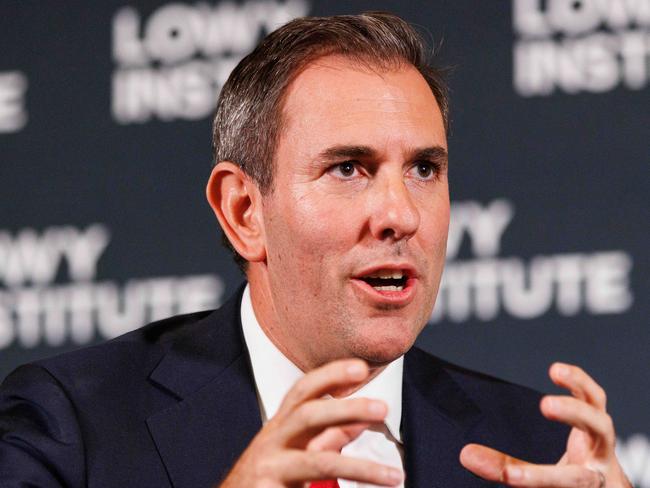
Finance Minister Katy Gallagher earlier this month warned savings were “increasingly difficult to find”, as she announced the government had slashed $1 billion of spending on consultants, contractors and labour hire.
“You will see some savings, you’ll see some reprioritisation with existing expenditure, you’ll see all of that,” she told the ABC.
“But the pressure on the budget is real and intensifying. It will be a budget that needs to invest in the areas that we need to, and in those areas that are unavoidable.”
Annual inflation rose 3.6 per cent in the March quarter, with the stubbornly high figure dashing hopes of a predicted rate cut this year, as some economists even flip their predictions to further hikes by the Reserve Bank.
The RBA raised the cash rate five times last year to 4.35 per cent, putting intense pressure on households, with one top forecaster now warning of another three rate hikes in 2024 to 5.1 per cent.
The opposition has accused the Albanese government of being “addicted to spending”, blowing through $209 billion in windfalls from higher tax receipts and commodity prices since it came to power.
“That’s $20,000 for every Australian household,” Shadow Treasurer Angus Taylor told Sky News last week.
“This is why we’re hearing economists from many quarters coming out and saying they’ve got to stop the spend-a-thon, they’ve got to contain the growth in spending, that will take pressure off this homegrown inflation, Labor’s homegrown inflation, which is hurting households, which has meant that we’ve got more persistent, higher interest rates than was expected.”
Mr Taylor said the Coalition would “wait and see” whether inflationary measures such as energy subsidies and rental assistance would be included in the budget.
“The first and most important test of this budget is, are they going to put downward pressure on inflation and interest rates,” he said.
HERE’S WHAT WE KNOW SO FAR:
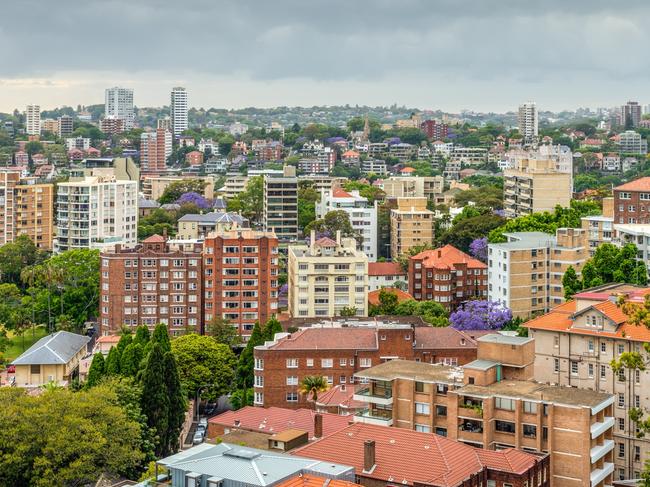
$11 billion push to fix housing crisis
• The Albanese government has announced an $11 billion boost to new housing investments under its Homes for Australia plan, which will include $1 billion towards building new homes and crisis accommodation for women and children fleeing domestic violence and $1 billion to help states and territories build roads, sewers, energy, water and community infrastructure. The biggest chunk of the money is $9.3 billion for a five-year National Agreement on Social Housing and Homelessness, for states and territories to combat homelessness, provide crisis support and build and repair social housing. “Homes for Australia will turbocharge the construction of new homes right across the country and ease the pressure on Australians doing it tough,” said Housing Minister Julie Collins. “We’re working across government, and with other tiers of government, to achieve the ambitious national target of 1.2 million new homes by the end of the decade. This will deliver more homes for home buyers, more homes for renters and more homes for Australians who need them.”
TAFE boost to plug tradie shortage
• An additional 20,000 fee-free TAFE places will be offered in an effort to address the chronic shortage of tradies plaguing Australia’s construction sector. A total of $90.6 million will go towards funding an extra 15,000 free TAFE and VET places and 5000 pre-apprenticeships to increase a pipeline of skilled workers in the construction and housing industry. Infrastructure Australia has previously warned trade and labourer shortages are growing at the fastest rate and will remain acute until 2025, with trades such as carpentry, plumbing, electrical work and masonry are among the most affected areas. The budget will also include $1.8 million to streamline skills assessments for about 1900 potential migrants from countries with comparable qualifications to fill jobs in construction, and prioritise the processing of around 2600 Trades Recognition Australia skills assessments in targeted occupations.

Super top-up for new parents
• Workers taking paid parental leave will receive $1.1 billion in superannuation contributions in the budget, then $600 million a year thereafter once the scheme is up and running, Nine News reports. From July 1, 2025, eligible parents will receive an additional 12 per cent superannuation on their government-funded parental leave. “When mums or dads go on the government paid parental leave system, they shouldn’t be missing out on superannuation,” Dr Chalmers told Nine’s Today on Sunday. “We recognise that when people are making difficult choices about whether to have kids, we need to support them.”
Fuel excise cut off the table
• Amid calls for the Albanese government to provide additional relief to motorists, Dr Chalmers said the budget would not “chase the petrol price up and down” via a temporary cut to the fuel excise. The fuel excise is a tax levied by the federal government on petrol and diesel bought at the bowser. Motorists currently pay 49.6 cents in excise for every litre of fuel they purchase. Dr Chalmers said the focus would instead be on a suite of other cost-of-living measures which would act as less of a drag on the budget bottom line. “We want to help motorists because we know that they’re under pressure, but we just think that there are more effective ways to do that elsewhere in the budget, rather than the sort of multi-billion dollar outlays we’ve seen in the past when it comes to the petrol excise,” Dr Chalmers told Sky News.
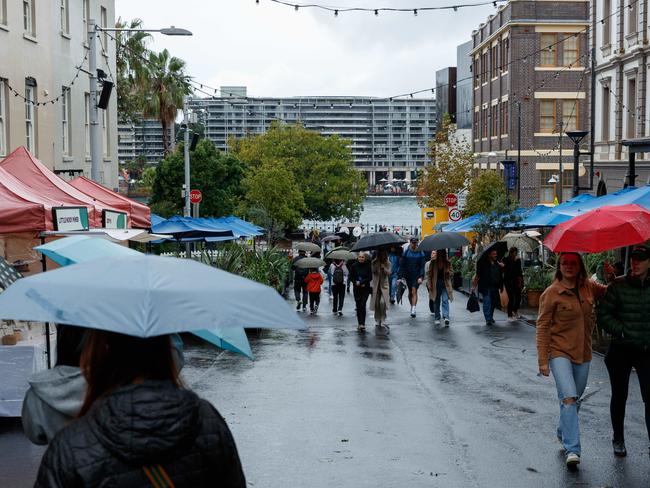
Overhauled stage three tax cuts
• The centrepiece of cost-of-living relief in the May budget will be the overhauled stage three tax cuts, announced by Prime Minister Anthony Albanese in January. The measures, slated to take effect on July 1, will bolster the take-home pay of every taxpayer — rather than middle and high income earners who benefited under Morrison-era iteration of the tax package. Dr Chalmers has also hinted at tax reform to the encourage businesses to grow. While the Treasurer has ruled out changes to negative gearing and capital gains tax, he has suggested there could be reforms to help incentivise investment. “We have indicated that we are prepared to use the tax system in the service of our big national objectives, as the budget will balance the cost of living … with our responsibilities to the future,” Dr Chalmers said. Whether the budget will include a broad range of measures for business, such as the instant asset write-off which has been included in previous budgets, or more focused tax credits and deductions that align with its Future Made in Australia scheme, remains to be seen.
Health funding gets major boost
• The budget will include $8.5 billion in new health investment. That includes funding for $227 million into opening 29 more urgent care clinics — which will offer walk-in, bulk-billed services seven days a week — across the country to ease pressure on emergency departments, and increased funding for the medical research future fund, with $1.1 billion earmarked for existing projects and $150 million for research into rarely survived cancers. More than one million Australian women suffering from endometriosis will be supported via “historic” changes to Medicare, with the government investing $49.1 million to create two new MBS item numbers. From July 1, 2025, women suffering from the debilitating disease will have longer specialist consultations of 45 minutes or more covered under Medicare. “The government has heard the call from women across the country and we are strengthening Medicare so that it is serves the needs of women living with this debilitating disease,” Health Minister Mark Butler said.
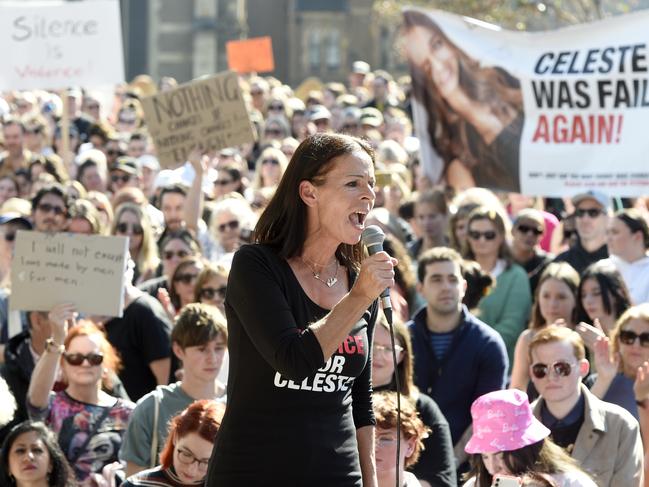
$5000 to leave violent partner
• Women experiencing domestic violence will be eligible for $5000 in financial support to escape their partner under the Leaving Violence Program. The government will spend $925.2 million over five years to permanently establish the program, trialled since 2021, starting mid-2025. Eligible victim-survivors can receive an individualised financial support package of up to $1500 in cash and up to $3500 in goods and services, as well as safety planning, risk assessment and referrals to other essential services for up to 12 weeks. “Research has shown us that financial barriers can be a huge impediment to victim-survivors breaking free of a violent relationship and we are determined to reduce those barriers along with providing other supports to assist those fleeing violence,” Social Services Minister Amanda Rishworth said.
Crackdown on porn and misogyny
• Age-verification technology for harmful content like online pornography and other age-restricted services will be trialled as part of efforts to curb easy access to damaging material by children and young people. The pilot, to be funded in the budget, will test a range of available products as part of the eSafety Commissioner’s work under the Online Safety Act. The government will also introduce legislation to ban the creation and non-consensual distribution of deepfake pornography, and is working with states and territories to update the “outdated” Classification Scheme with a focus on “violent pornography”. It will also roll out a new phase of the ‘Stop it at the Start’ campaign, which will include a “counter-influencing campaign” in online spaces where violent and misogynistic content targeted at boys and young men thrives.
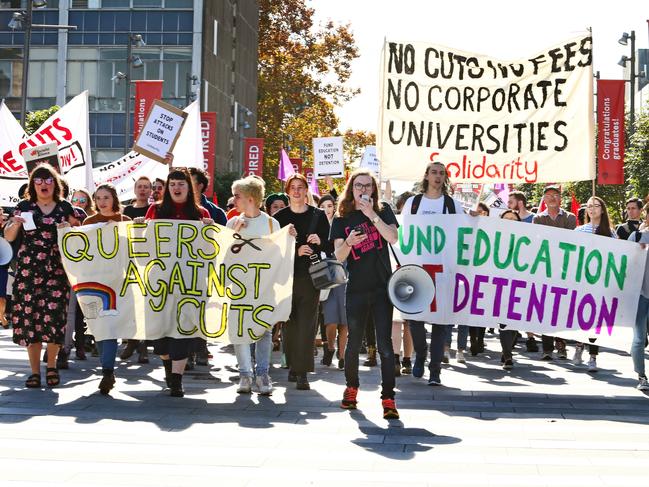
$3 billion in HECS debt wiped out
• More than three million Australians with HECS debts will get refunds worth $3 billion for last year’s brutal 7.1 per cent inflation shock. The government is changing the indexation of the higher education loan repayments from inflation to the lower of either inflation or wages, and backdating the change to June 1, 2023. That means an individual with an average HECS debt of $26,500 will see around $1200 wiped from their outstanding loans this year, pending the passage of legislation. But students with huge debts of $100,000 who have studied expensive degrees including medicine, law or even studied multiple degrees could have $5000 wiped. “This will wipe out what happened last year and make sure it never happens again,” Education Minister Jason Clare said.
$320 payments for student nurses, teachers
• Australians studying to be a teacher, nurse, midwife or social worker will be eligible for a $319.50 per week payment during their clinical and professional placement periods from July 2025. Around 68,000 eligible higher education students and 5000 VET students each year will have access to the Commonwealth Prac Payment to support them during the mandatory workplace requirement periods. The means-tested payment will be in addition to any income support a student may also receive. “Placement poverty is a real thing,” Mr Clare said. “I have met students who told me they can afford to go to uni, but they can’t afford to do the prac. Some students say prac means they have to give up their part-time job, and that they don’t have the money to pay the bills.”
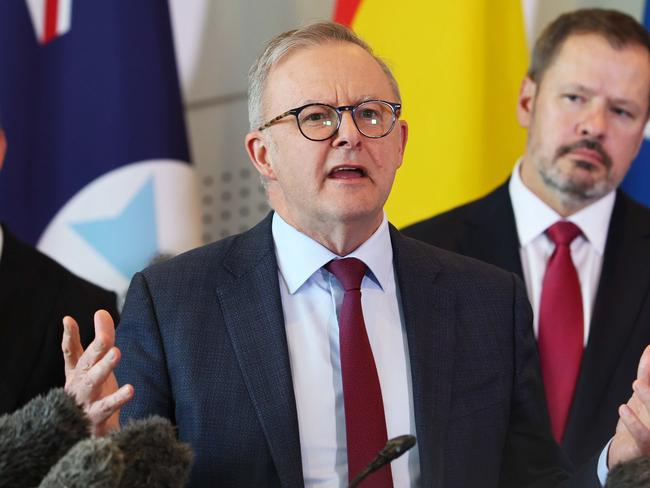
No increase to welfare payments
• People on Jobseeker and Youth Allowance should not expect another increase to the welfare payments from their existing level of $55 and $45 a day. “The budget will focus on other ways to provide help for people who are doing it especially tough,” Dr Chalmers said earlier this month. Economists including Chris Richardson and Nicki Hutley have called on the government to increase Jobseeker and Youth Allowance to 90 per cent of the Age Pension, a move that would cost the budget $4.6 billion a year, and a group of 99 prominent Australian women recently wrote to the Prime Minister urging a “substantial increase” to “deliver basic economic security for women”.
Massive push to bring back manufacturing
• Labor’s landmark Future Made in Australia policy, announced by the Prime Minister in Brisbane last month, will aim to boost incentives for clean energy and advanced manufacturing while seeing government taking more of a role in backing high-risk, high-reward ventures. The policy package, which will bring a range of new and existing initiatives including subsidies, tax breaks and trade barriers under one umbrella, will also offer fast-tracked approval processes for international investors with a proven track record of financing Australian projects. Anthony Albanese pointed to similar schemes in the US, EU, Japan and South Korea, warning Australia must offer the same or risk losing industries. “All these countries are investing in their industrial base, their manufacturing capability and their economic sovereignty,” he said. “This is not old-fashioned protectionism or isolationism – it is the new competition.”

$1 billion quantum computing gamble
• Almost $1 billion in taxpayer funds will be poured into a US tech start-up to keep Australia competitive in the fast-moving field to develop quantum computing. Silicon Valley-based advanced technology firm PsiQuantum, which is attempting to build the world’s first “fault tolerant” quantum computer, will receive $470 million in equity and loans from the Albanese government, matched dollar-for-dollar by the Queensland state Labor government, to set up shop in Brisbane. Quantum computing functions by harnessing the properties of subatomic particles, enabling the technology to simultaneously complete a vast number of calculations in seconds, a process that would take even the most powerful supercomputer thousands of years to solve. However, quantum computers are currently too error-prone for practical application. A fault-tolerant quantum computer seeks to overcome this challenge.
Climate-focused drought funding for farmers
• Future Drought Fund programs will receive a record $519.1 million to help farmers and regional communities prepare for the next drought and “make them more resilient to climate change”, which the previous fund under the Morrison government “did not acknowledge as a driver of longer and more severe droughts”. Labor says it has restructured the fund and its objectives to “get better results for farming families and communities”. “We’re helping farmers across the country develop business plans to manage diversification in a changing climate, we’re helping regional communities manage drought and other climate risks, and helping individuals get leadership training and mentoring,” said Agriculture Minister Murray Watt. “I’ve seen first-hand the great work under the FDF, like trialling new, drought-resistant livestock feed and connecting farmers with the latest scientific advice on reducing drought impacts.”

Another $100 million sent to Ukraine
• Australia will send another $100 million to Ukraine as part of a new military assistance package that includes short-range air defence systems, precision bombs, drones and equipment including generators, boats, helmets and boots. Announcing the package on a quick visit to Ukraine last month, Defence Minister Richard Marles said the latest top-up brought Australia’s total military assistance to $880 million since the start of Russia’s invasion and overall Australian taxpayer support to more than $1 billion. “Ukraine and its people have endured more than two years of Russia’s full-scale invasion but their spirit remains strong,” Mr Marles said. The Coalition said it “welcomed” the funding but called for more.
Consultants, contractors slashed by $1 billion
• The Albanese government says it will save a further $1 billion in the 2024-25 budget by slashing spending on consultants, contractors and labour hire, bringing the total to $4 billion since the 2022-23 October budget. “Since the election, there are around 8700 roles that were done by contractors or labour hire that are now being performed by public servants,” Ms Gallagher said. “While the Liberals talked tough about capping public service numbers when they were in government, in reality they were spending billions outsourcing the work to keep the public service headcount artificially low. The important investments that we’ve made in Services Australia, Veterans’ Affairs, the NDIA, Home Affairs and AUKUS are to ensure that the public service has enough staff to do the job they need to do to deliver services across the country and to keep Australians safe.”
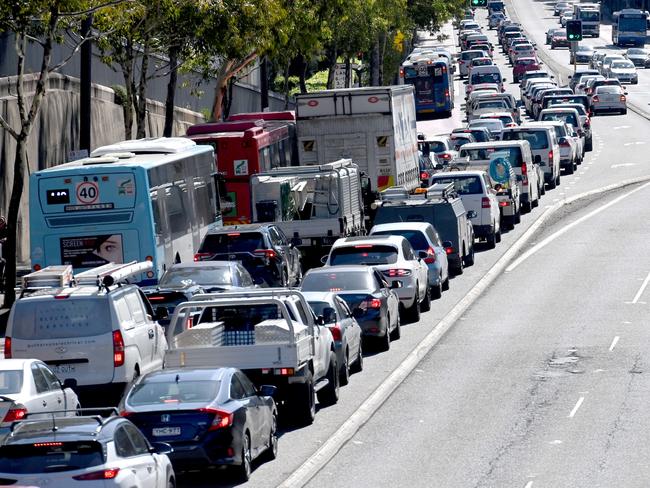
$1.9 billion to ease western Sydney gridlock
• Sydney’s “future lies in its west” but right now the “vibrant” and “diverse” communities are facing “challenges, particularly when it comes to traffic and how this impacts on quality of life”, the PM wrote in The Daily Telegraph. “We know right now that the traffic is slowing people down. That’s why we want to get western Sydney moving again. That’s why we have committed a further $1.9 billion towards 14 new projects and providing additional funding for two existing projects.” The new projects include developments on Mamre Road, Elizabeth Drive, Garfield Road East, Memorial Avenue and Appin Road and St Johns Road Intersection upgrade. “We will invest $147.5 million for planning for roads across greater western Sydney to ensure that road infrastructure can keep pace with a growing population,” Mr Albanese said.
Cutting-edge new cancer scanner
• Patients at the Paula Fox Melanoma and Cancer Centre at Melbourne’s Alfred Hospital will soon have access to cutting-edge scanning technology able to detect cancers earlier, with the Albanese government investing $12 million — to be matched by the Victorian government and The Alfred Foundation — to purchase a Quadra Positron Emission Tomography/Computed Tomography (PET/CT) Molecular Imaging scanner. “This scanner is faster, safer and can detect cancers earlier meaning many Victorians will receive an earlier diagnosis, which is so important in cancer care,” Health Minister Mark Butler said.
— with NCA NewsWire
Originally published as What we know about the May 2024 federal budget





